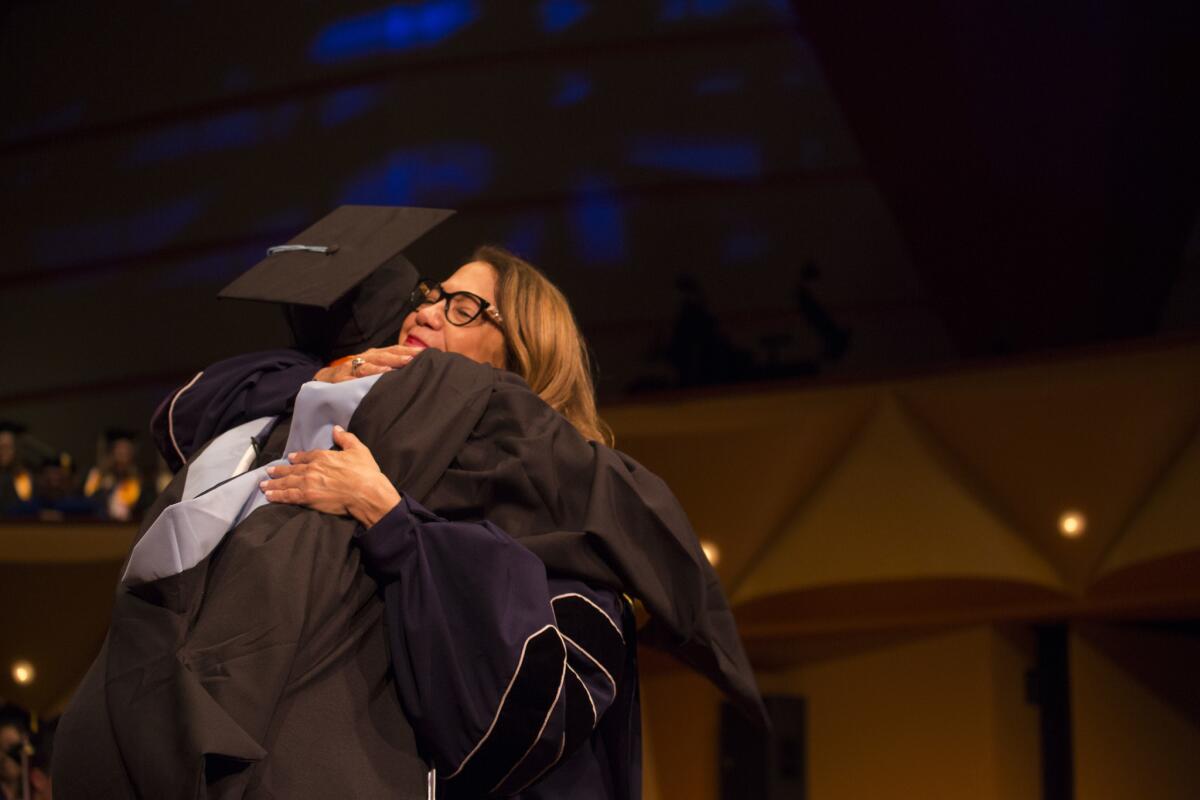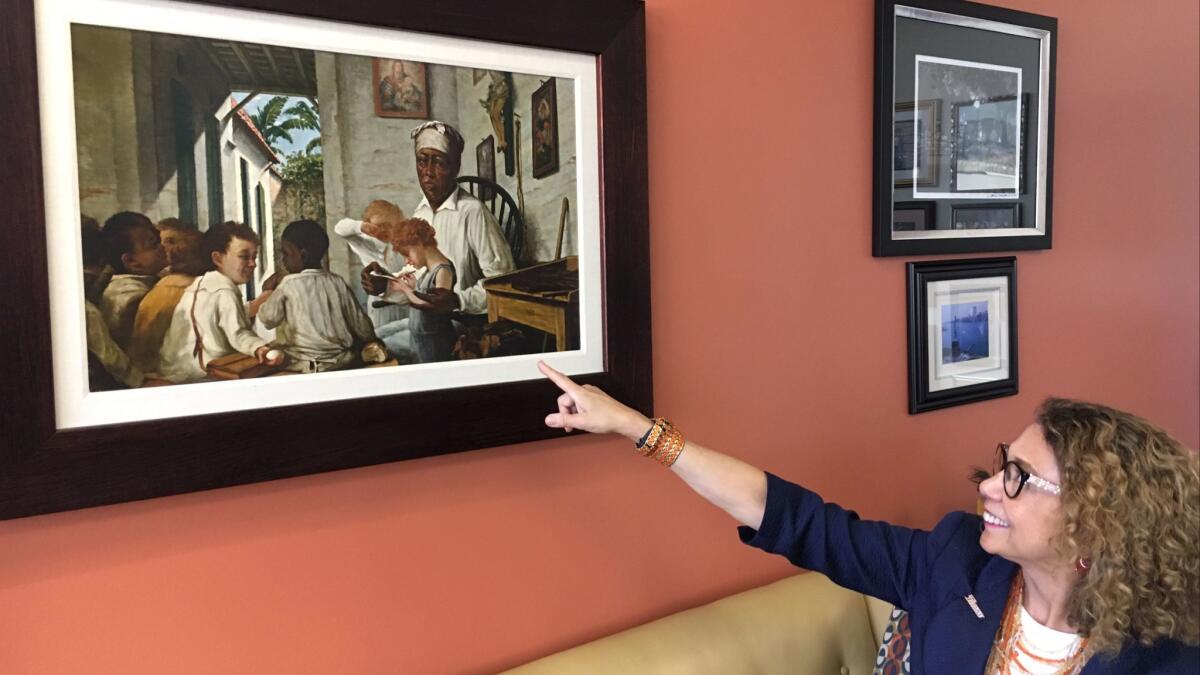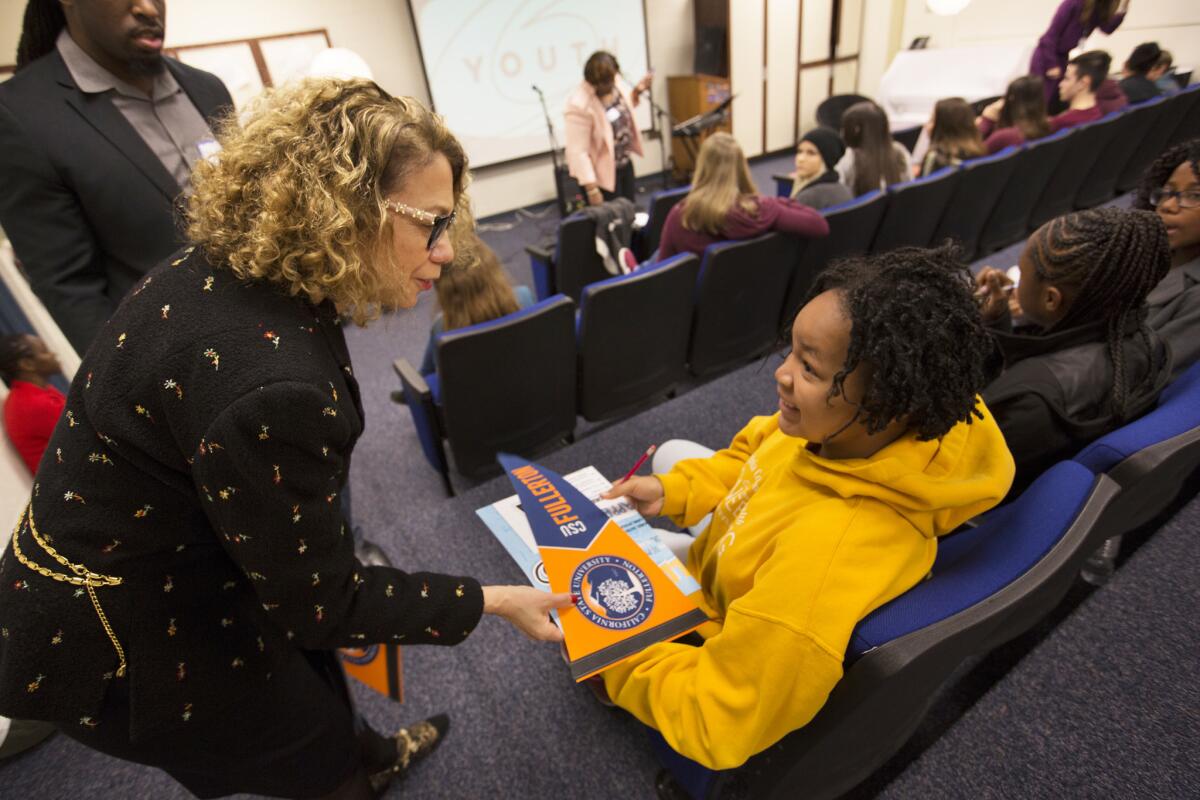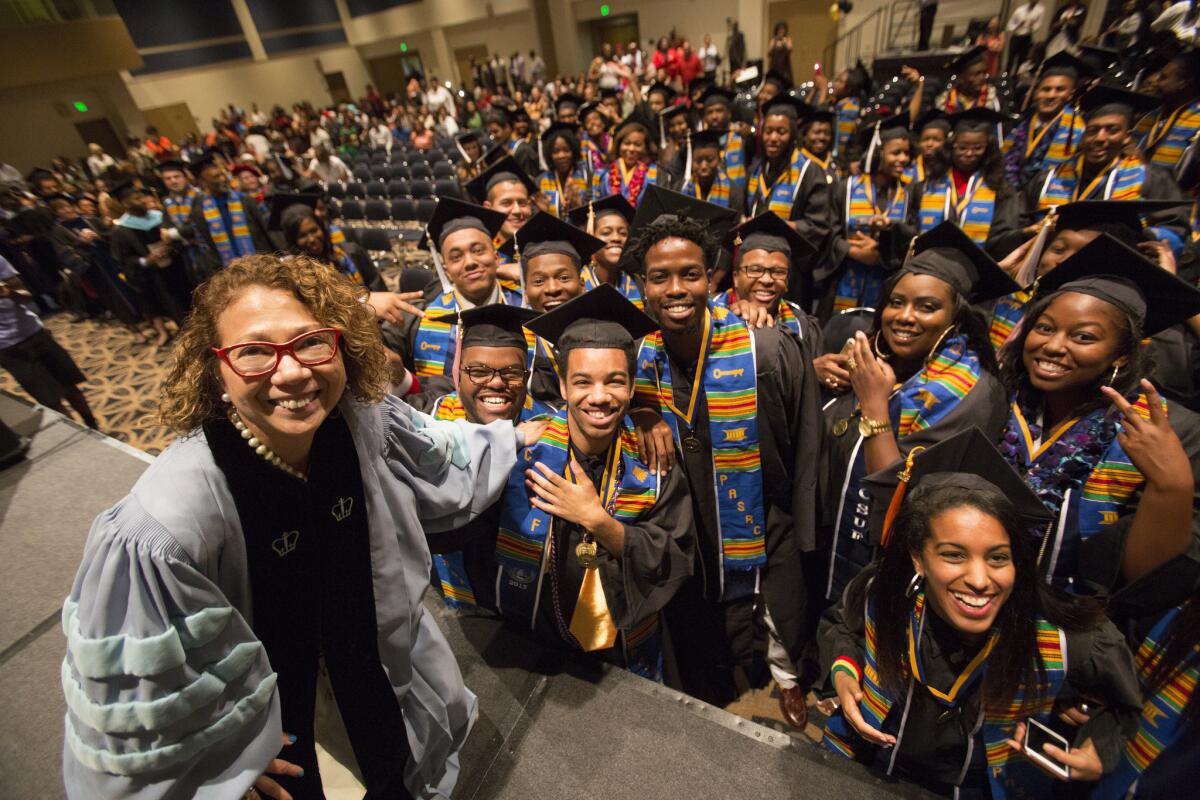Q&A: Campus conversation: Cal State Fullerton president Mildred García
On the campus of Cal State Fullerton, Mildred García is a familiar sight, with her big glasses, wide smile and ensembles in the school’s blue and orange.
The university president, who many simply call Millie, loves to salsa. She waves pom-poms at sporting events. On move-in day, she rolls up her sleeves and switches between English and Spanish when talking to new students and their families.
Nearly 60% of undergraduates at Cal State’s largest campus are the first in their families to attend college. García understands their experience. She was first-generation, too. College is for everyone, she likes to say. It’s never too early or too late to start.
García became the first Latina Cal State president when she was hired by Cal State Dominguez Hills in 2007. Cal State Fullerton, which she took over in 2012, now graduates more Latino students than any other California campus, and the second most nationwide. During her tenure, the campus, which enrolled a record 40,439 students this year, improved its four-year graduation rate by 65% and won recognition from a host of state and national education groups for closing the achievement gaps between Latinos and their white and Asian peers.
She pushed the campus to develop its first academic master plan, fix problems with “bottleneck courses” that were slowing students’ paths to graduation and centralized previously scattered academic, counseling and career services to make them easier for students to find and use. The main goal, she said, was to make everyone on campus focus on helping students succeed.
García this month announced that she will be leaving the nation’s largest public university system to head the American Assn. of State Colleges and Universities, which represents more than 400 public institutions like Cal State. She took a moment to share her thoughts before taking on her new role as a national advocate for accessible public higher education.
How do you make sure no student falls through the cracks?
“It’s about not being afraid to show students that you love them and that you care about them. … Faculty, staff and administrators are here because they want to be. When I meet with faculty members, I always ask: ‘Why are you here?’ I remember someone said to me: ‘Look, we at the Cal State system have students who are not entitled. Here, I know I play a small part in transforming their lives. Whereas, if I was at an elite institution, they would graduate in spite of me.’ Here, when you tell a student, ‘You can make it,’ and you have someone sitting next to you saying, ‘Let me show you how you can get this done,’ it really makes a difference. ...
It's about not being afraid to show students that you love them.
— Mildred García, Cal State Fullerton president

Students learn as much from outside the classroom as inside the classroom. So what are we doing to assist outside the classroom, to engage students with the university?…
There were so many people, when I first got here, who didn’t even know our graduation rates. They didn’t know our dropout rate. And now, each college actually knows, by department, how many come in, what’s the retention, what’s the graduation rate, what’s the ethnicity, what’s the gender, where are the problems? … We improved advising. Student affairs and academic affairs now work together. We set up analytics so we can actually monitor online who’s in trouble so that we can immediately get them tutoring. The first semester, we monitor them. And God forbid they fail, then at the end of the semester, individuals will call them and say: ‘Don’t lose hope, we're here to help you.’ As a first-generation college student, I get it. You don't believe college is for you, and failing a class could really hurt your self-confidence. So when you have people showing that they care, it helps students continue to push forward.”

It must help to have a story so similar to many of your students.
“I have many students who tell me, when I tell my story, ‘Oh my God, you just told my story.’ That ‘I lost my father when I was 12,’ that ‘my mom worked in a factory. ... My five older brothers and sisters were born in Puerto Rico. My brother and I were the surprises.’ I let them know all the time when I speak to them that I was a first-generation college student, that my parents were poor. And I'm telling them that so they know that they could reach for whatever they want to reach. That this is hard work, but … when they graduate, it transforms not only their lives but the lives of the people who come after them. … My family used to say, and I’m going to translate it from Spanish: ‘The only inheritance a poor family can leave you is a good education.’ ”


Have you learned any lessons at Cal State that you will take with you to Washington D.C.?
“You have to listen to your constituency to understand their needs. You also have to listen to the silences. Sometimes people don’t speak up, yet they have a lot on their minds. So you have to reach out to them to understand where they're coming from. ... You need to understand who you serve. And you need to work hard to ensure that people collaborate for the benefit of the people you are serving.
… We need to listen to all students, may they be Caucasian, may they be African American. We take for granted that we know — but we don’t. I may be Hispanic, I may be Puerto Rican, but I don’t understand the issues of a Mexican American family who have loved ones here who don’t have the appropriate papers. I learn from my students what their experiences are. I ask them, what are their needs? Then we can come back and say, ‘OK, what can we do as an institution?’ Whether it’s counseling or advising or telling them where they can get legal services and giving them the resources to go, we need to listen to them before we even offer. … You can’t fix something if you don't know what the issues really are.”
Read more at Essential Education, our daily look at education in California and beyond »
Follow @RosannaXia for more education news
Sign up for Essential California
The most important California stories and recommendations in your inbox every morning.
You may occasionally receive promotional content from the Los Angeles Times.








